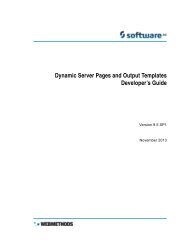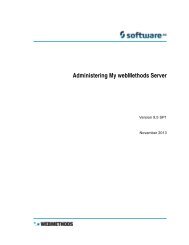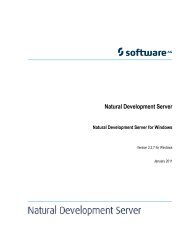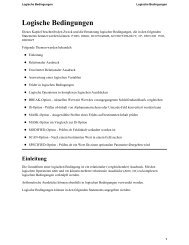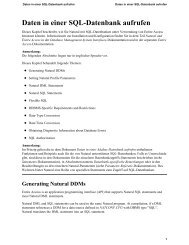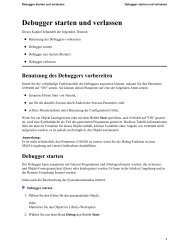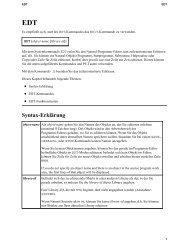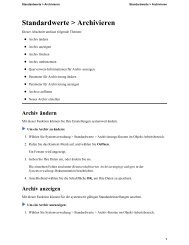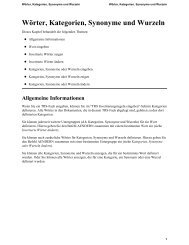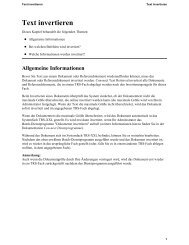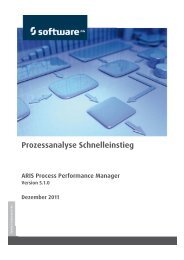Tamino XQuery User Guide - Software AG Documentation
Tamino XQuery User Guide - Software AG Documentation
Tamino XQuery User Guide - Software AG Documentation
You also want an ePaper? Increase the reach of your titles
YUMPU automatically turns print PDFs into web optimized ePapers that Google loves.
Advanced Usage<br />
declare function local:siblings($a as element()) as element()*<br />
{<br />
for $x in $a/../*<br />
where not($x is $a)<br />
return $x<br />
}<br />
let $a := foo bar <br />
return local:siblings($a/a1)<br />
It takes an element node as argument and returns all its sibling element nodes. Following the<br />
function declaration it is directly used in a query body resulting in the node bar.<br />
<strong>User</strong>-defined functions may be recursive, that is a function can contain a call to itself:<br />
declare function local:depth($e as node()) as xs:integer<br />
{<br />
if (not($e/*))<br />
then<br />
1<br />
else<br />
max(for $c in $e/* return local:depth($c)) + 1<br />
}<br />
This function computes the depth of a node by calling itself for its children nodes.<br />
To avoid running out of memory during the execution of a user-defined function, the <strong>XQuery</strong><br />
processor restricts the amount of memory that can be used by a single query processing thread<br />
during query execution. The amount of memory can be modified by an <strong>XQuery</strong> pragma. Similarly,<br />
you can avoid a stack overflow by restricting the call stack of the function. The following pragma<br />
sets the available memory to 100 MB and the maximum call stack depth to 1000 (default value is<br />
256):<br />
{?execution memory="100" call-stack-depth="1000"?}<br />
Note: See also the Performance <strong>Guide</strong> for information about optimizing user-defined functions<br />
using inlining techniques.<br />
Defining and Using Modules<br />
In <strong>XQuery</strong>, code can be organized into modules. There are two principal kinds of modules: a main<br />
module that contains the query body, and library modules that you can import into other library<br />
modules or into the main module. For example, you can put the functions defined in the last section<br />
into a module of its own:<br />
78<br />
<strong>XQuery</strong> <strong>User</strong> <strong>Guide</strong>



